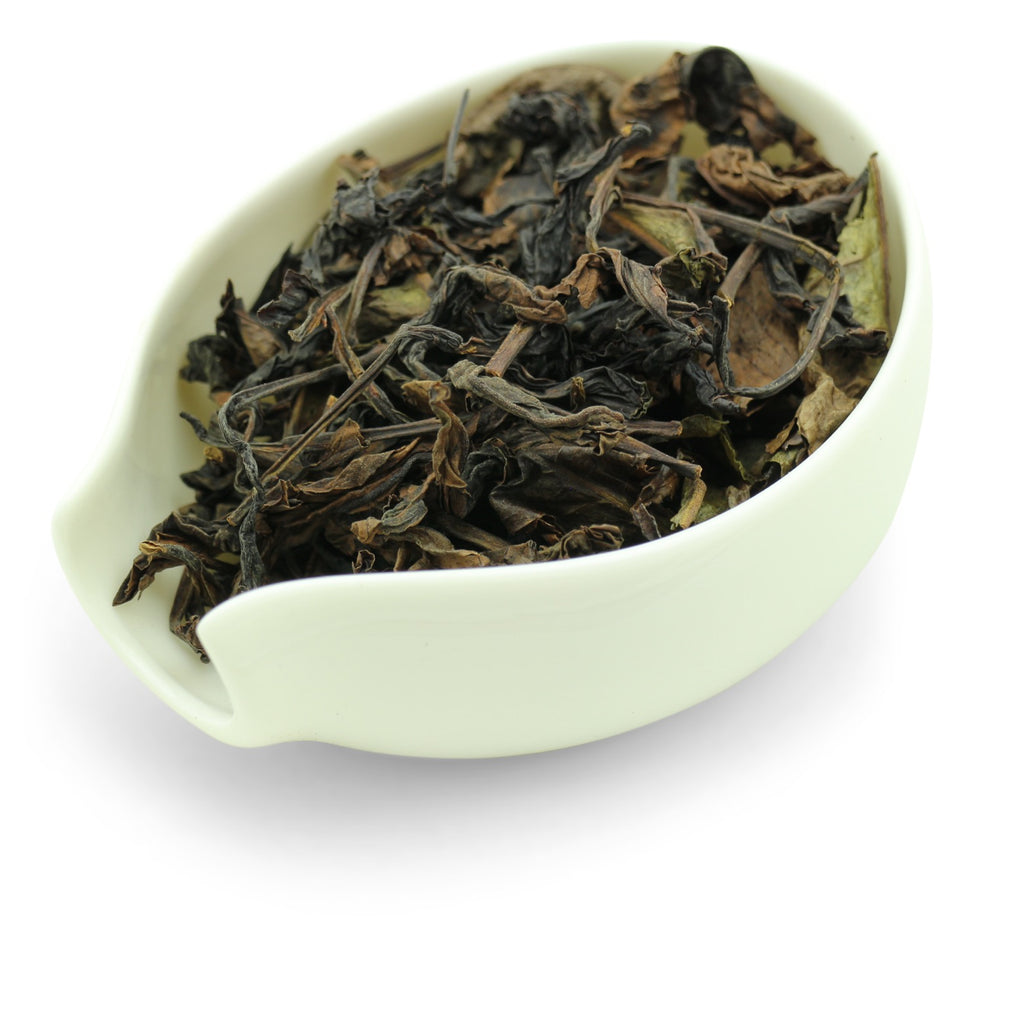GABA
It still amazes me how some teas can mimic a particular smell or taste to such an extent that you wonder if they might have been flavored. This GABA, produced from the Taiwanese cultivar Hong Yu (Tai Cha #18), is a case in point. The smell of king's lily is so intense and prominent that it almost feels like you’re smelling the flower itself, including its characteristic vanilla note. The florality carries over to the liquor as well, with added notes of cedarwood incense and a slight ginger spiciness. No tea for the faint-hearted, you might think—and rightly so! On top of that, it’s a welcome alternative to the many nutty or strongly roasted GABA teas on the market. So, if you’re up for a full-on flowery experience, look no further.
Written by Sven
Production process
GABA tea is a type of tea that is rich in gamma-aminobutyric acid (GABA), a naturally occurring neurotransmitter that is believed to promote relaxation, reduce anxiety, and improve sleep. Originally developed in Japan in the 1980s, GABA tea has gained popularity worldwide due to its potential health benefits.
How GABA tea is produced:
1. Harvesting: The production of GABA tea starts with high-quality tea leaves, typically from oolong or black tea varieties. The leaves are harvested just like regular tea.
2. Anaerobic fermentation: The key step in producing GABA tea is a unique fermentation process where the tea leaves are exposed to an oxygen-free environment. The leaves are placed in a vacuum chamber or nitrogen-rich environment to create anaerobic conditions. This step is crucial as it converts the natural glutamic acid in the tea leaves into GABA.
3. Timing and temperature control: The leaves are usually kept in these anaerobic conditions for 8 to 12 hours, at temperatures around 40°C to 50°C. This process is repeated several times to maximize GABA production in the leaves.
4. Drying: After the anaerobic fermentation, the leaves are dried similarly to other types of tea.
GABA tea can be enjoyed hot or cold, offering a distinct flavor profile with a smooth, rich taste that varies depending on the type of tea base used.
- ORIGIN: Lugu, Nantou, Taiwan
- CULTIVAR: Hong Yu (Tai Cha Nr. 18)
- HARVEST TIME: Spring 2023
- TASTE: King's lily, cedarwood incense, ginger
- Quantity: 6g / 500ml
- Water temperature: 100°C
- Infusion time: 5 min
- Quantity: 3g / 100ml
- Water temperature: 100°C
- 5 infusions: 25, 30, 40, 50, 60 sec
For best results in gongfu cha, brew in the traditional gaiwan or in a Yixing teapot.






